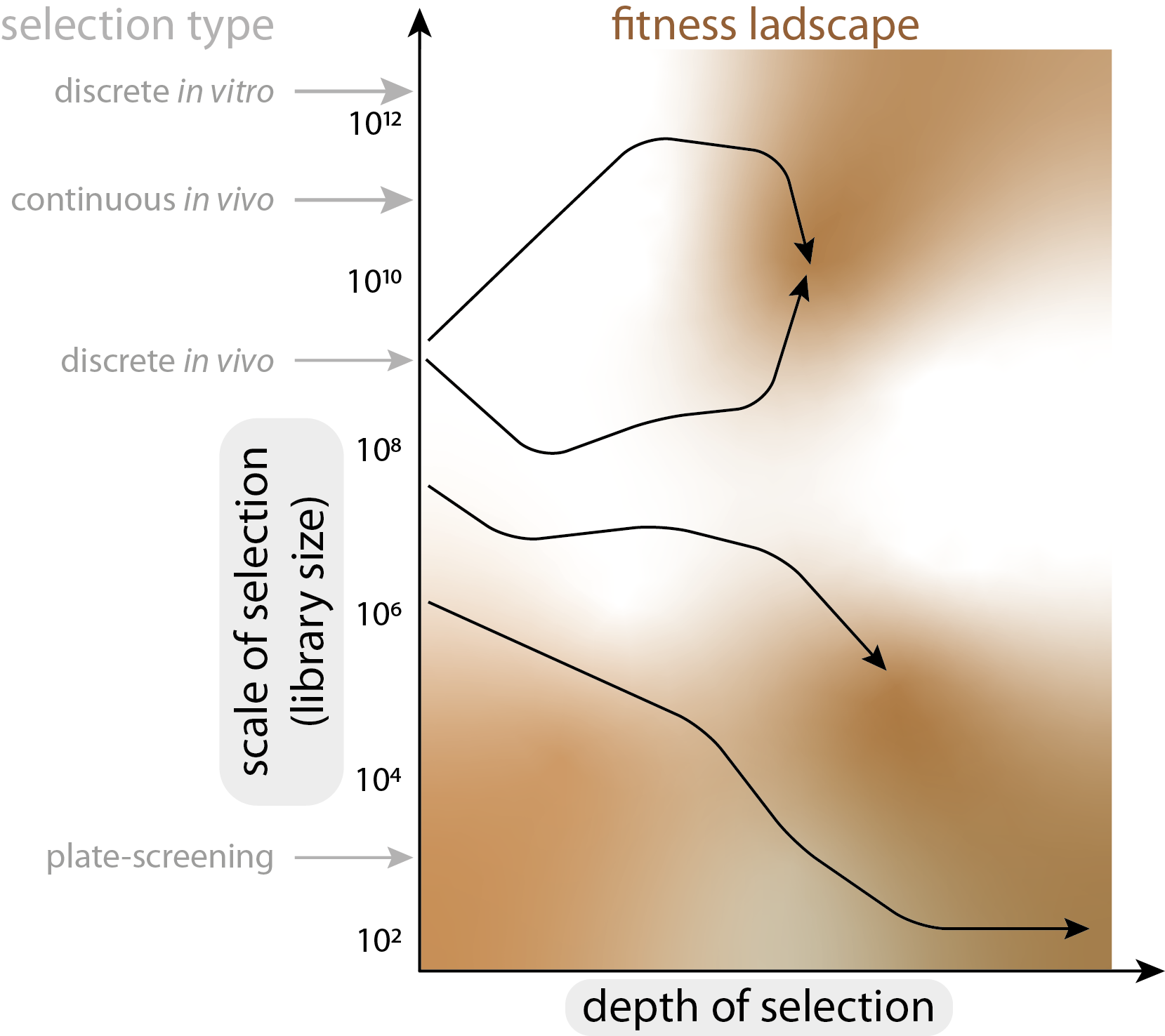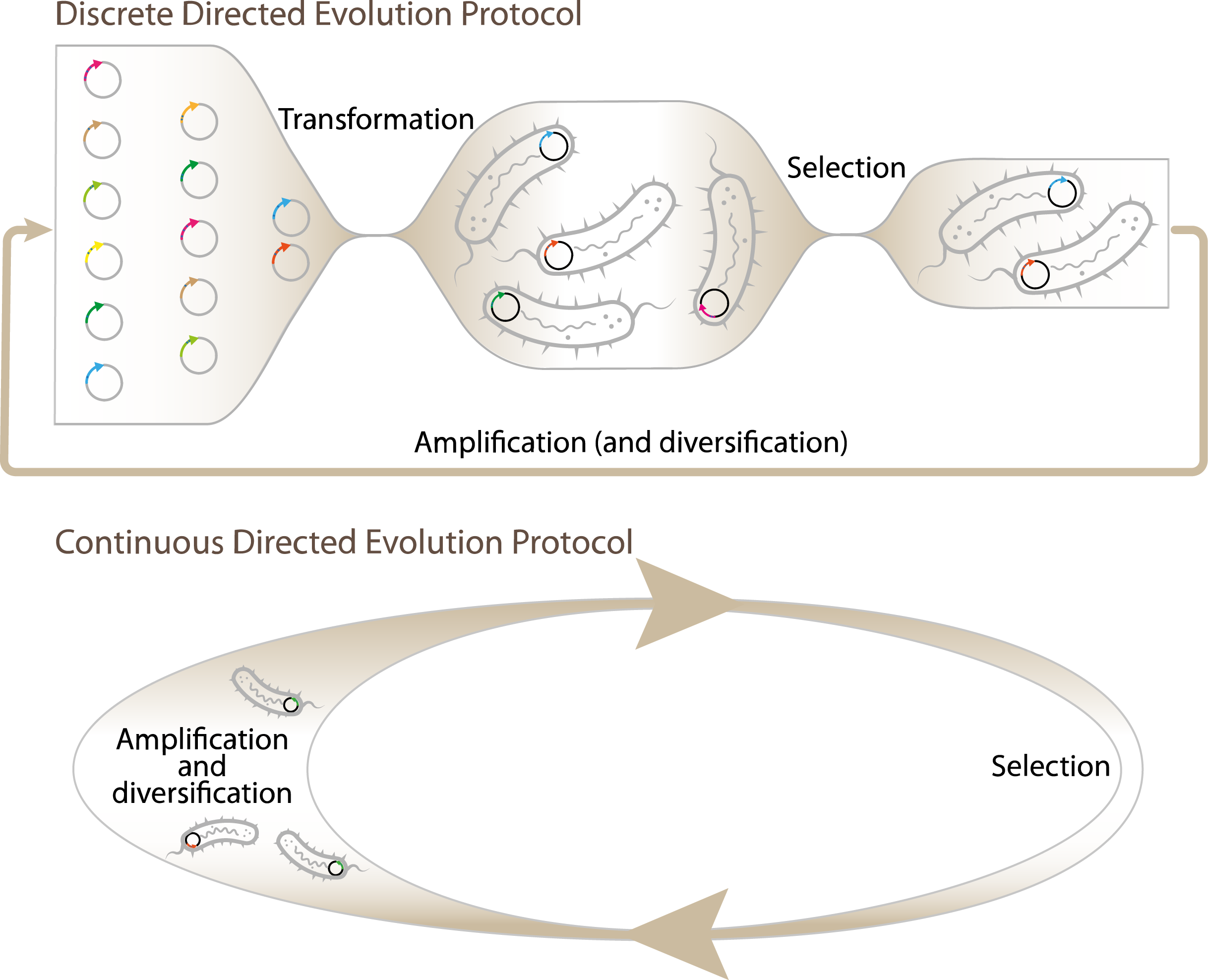Continuous directed evolution methods
Continuous directed evolution (CDE) methods offer a significant advantage over the discrete ones as they:
- Involve less interrogation from the experimenter. Hence, this type of DE could be significantly less laborious in the long run than the discrete DE protocols.
- In vivo selection is typically coupled with in situ mutagenesis. It leads to the generation of larger diversity libraries, i.e., it increases selection scale (Figure 1).
- Repeated iteration of the evolutionary protocol results in a deeper exploration of the phenotypic space, i.e., it expands the depth of evolutionary search (Figure 1)

The use of both larger scale and greater depth of evolutionary search makes CDE a step closer to the natural selection systems, which may be more efficient in general and certainly more suitable for the evolution of complex systems. CDE also takes advantage of the fact that both selection and mutagenesis occurs in the same host organism, effectively cancelling several bottlenecks such transformation that is typical for discrete DE (Figure 2). Nevertheless, discrete methods could be much more straightforward to set in the lab what certainly aids to their popularity. The exploitation of viral replication machinery is a popular concept in CDE, with two most prominent examples being Phage Assisted Continuous Evolution PACE for evolution in E.coli and viral evolution of genetically actuating sequences VEGAS that is accustomed for the evolution of proteins in mammalian cells. The Adaptive Laboratory Evolution, in principle, can be considered as one of the CDE methods as well. Recent developments in situ mutagenesis protocols will undoubtedly lead to the development of novel CDE systems.
